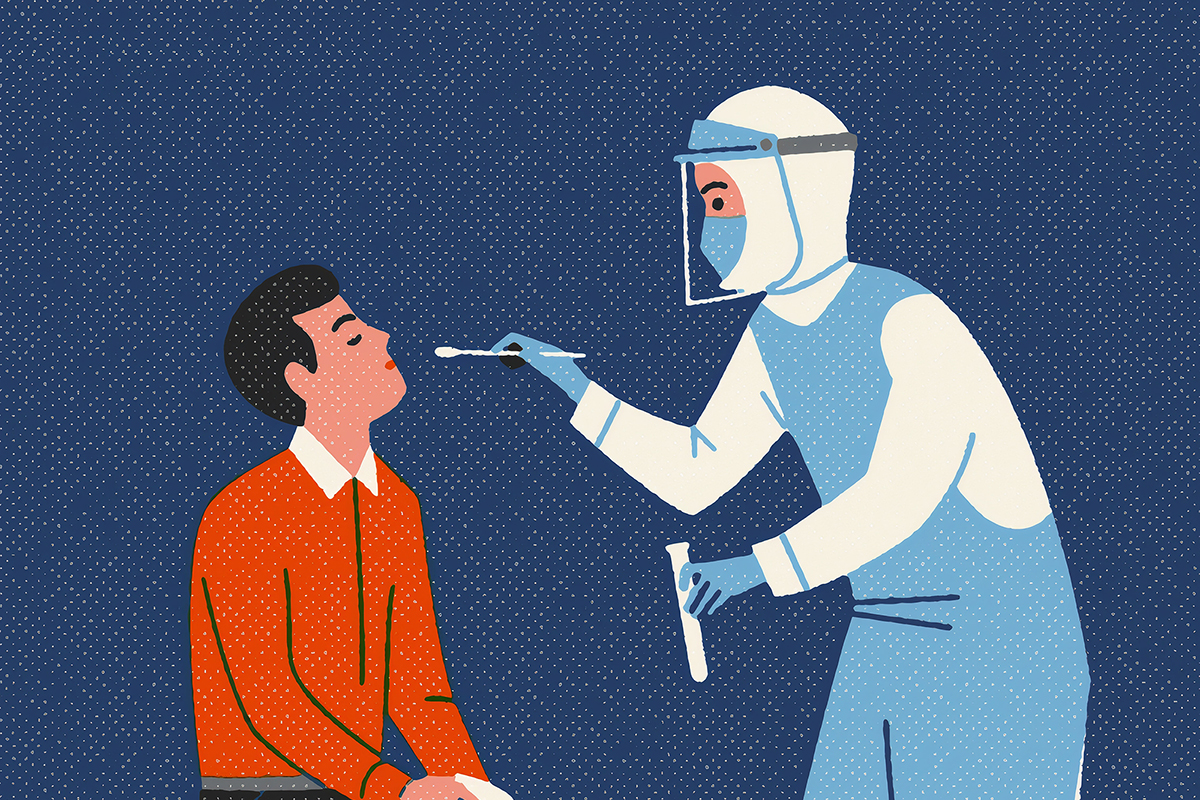
Written By: Biomeme Staff
“Ahhhh-CHOO!”

Cut to me frantically searching “COVID-19 symptoms” on Google for what must be the millionth time this year.
“Could I have COVID-19?”
It’s a question we’ve all repeatedly asked ourselves these past 6 months since the COVID-19 pandemic began. With symptoms similar to that of the common flu or even no symptoms at all, that question can be loaded. In the United States, COVID-19 testing (and the lack of testing) has been a topic of concern since social distancing and quarantines went into effect in March.
Studies show that 42% of COVID-19 cases are asymptomatic, but still contagious. So although it may not affect everyone in the same way, you won’t always know who you are spreading it to and how it will affect them. Of those cases that are symptomatic, CDC Director, Robert Redfield says,
“It appears that we’re shedding significant virus in our oropharyngeal compartment, probably up to 48 hours before we show symptoms...This helps explain how rapidly this virus continues to spread across the country because we have asymptomatic transmitters.”
Okay, sounds like testing is important to curb the spread of the virus, but what actually happens when you get tested for COVID-19? We can help answer that.
So, you fear you’re at risk of having COVID-19 and found a test site. Most test sites will collect a sample from you using a long swab called a “nasopharyngeal swab” or NP swab for short (CDC Clinical Specimen Guidelines).
NP swabs aren’t the most comfortable sample collection method, but they are one of the most sensitive. This means that a virus, like SARS-CoV-2, can be detected in small amounts compared to other sample collection methods like throat swabs or saliva. Early detection is very important with coronavirus because the infection can spread days before you experience any symptoms.
When your healthcare provider collects your sample, they will ask you to tilt your head slightly back while they insert the swab through your nostril to the back of your throat. They will gently twirl the swab for a few seconds before pulling it out. Like I said, not a comfortable process, but it’s over within a few seconds. Watch the short video below to see Biomeme’s co-founder, Jesse, receive an NP Swab.
Typically, when a healthcare provider collects your sample, they’ll send it off to a central lab where lab personnel will extract and purify RNA from the SARS-CoV-2 virus off your NP swab. This process can take hours for a professional biologist or lab technician to complete with standard lab equipment. After the RNA is extracted and purified, it is typically tested using a real-time RT-PCR testing platform which can take a few more hours.
Add in transport time, queuing of samples, and the shear volume of samples that labs are trying to deal with during the pandemic and you can see why it can often take many days or up to a week or more before you finally find out if your sample tested positive or negative for the SARS-CoV-2 virus. Not only is that a problem for your mental health and sanity, but the longer you wait for results, the more likely you are to potentially spread the virus.
With Biomeme, a temporary collection site can turn into an actual test site. Here’s how it works:
It sounds more complicated than it really is, which is why we have a short video to show you how it’s done.
Since all you need to do M1 Sample Prep is the cartridge, syringe, and sample, it is a viable alternative that can be done on-site at a temporary or mobile lab, eliminating the need to ship samples to a central lab and wait days to get results.
The test for COVID-19 is completed using a process called real-time RT-PCR. In the most basic terms, real-time RT-PCR is like a targeted photocopy machine for DNA/RNA. In the case of this test, it targets specific regions of the SARS-CoV-2 virus’ RNA and, if present, it tags them with a fluorescent tag and photocopies the viral RNA segments up until they can be detected with a machine called a thermocycler.
Similar to sample prep, a real-time RT-PCR test is typically stored in a -80º C freezer and it takes some time and expertise to set up, but Biomeme’s test is pre-mixed and freeze-dried. That means all that needs to be added is a small amount of purified RNA before the test can be run, which makes things way easier for on-site testing.
Biomeme’s SARS-CoV-2 Real-Time RT-PCR Test comes in three different form factors that make it easy to use our test in the lab or in the field, no matter how remote. For this case, we’ll discuss our 3-well PCR Go-Strips™. Go-Strips™ are easy to use in remote locations or on-site labs and are perfect when you need to test up to 9 samples at a time in a single RT-PCR run. Here’s how easy it is to add a sample to Go-Strips:
Biomeme’s SARS CoV-2 Go-Strips can be used with our Franklin™ Real-Time PCR Thermocyler. The Franklin thermocycler is a hand-held, battery-operated real-time PCR device that takes about an hour to run our SARS-CoV-2 test.
If you’re calculating the time from sample collection to results, that means you can get negative or positive results for up to 9 samples in <90 minutes on a single system! When it comes to curbing the spread of COVID-19, it’s becoming increasingly more critical to get fast results.
After the real-time PCR test is complete, the final step is to look at the results and determine if the test has detected RNA from SARS-CoV-2 virus in your sample.
Typical real-time PCR results for lots of samples look something like this:
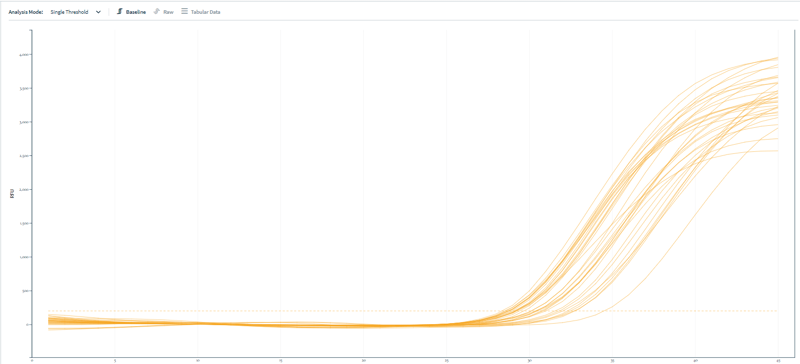
A lot of lines on a graph called “amp plots." You can see where the photocopy machine really kicks it up into high gear around ⅔ the way through the test. Those S curves mean your target DNA/RNA was detected.
In addition to showing real-time PCR amp plots, our results are also summarized so you can quickly see in our smartphone app if a target was detected or not detected. The summarized results will look something like this for three samples:
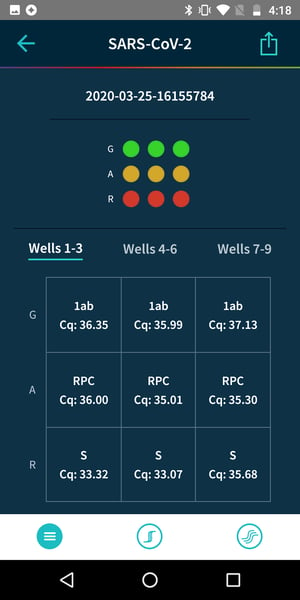
If a circle is filled in, that means the target was detected. If it’s not filled in, the target was not detected. Our test is a triplex test which means it tests for two different SARS-CoV-2 viral genes (green and red) as well as a positive control (amber). A negative result looks like this (only the positive controls for the three samples light up in amber):
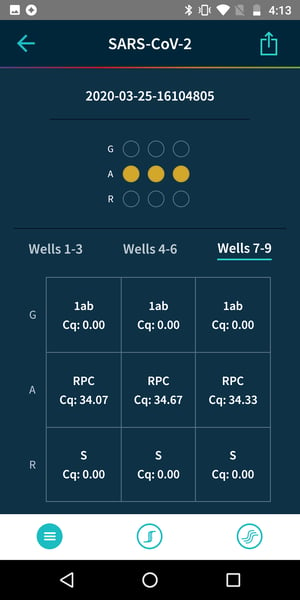
Unfortunately, testing for COVID-19 is going to be necessary for a long time to come - even after a vaccine is designed, manufactured, and deployed worldwide. Biomeme is doing all that we can to make the testing process as efficient and fast as possible so that you can get some sleep at night and stop worrying about every sneeze.
Hopefully this gave you a little more insight into how a COVID-19 PCR test is done and how Biomeme's solution differs slightly from traditional lab-bound testing. The Biomeme SARS-CoV-2 test has been validated but FDA’s independent review of this validation is pending. To see if your organization qualifies, please don't hesitate to reach out.
Get the latest tips from Biomeme shipped right to your inbox
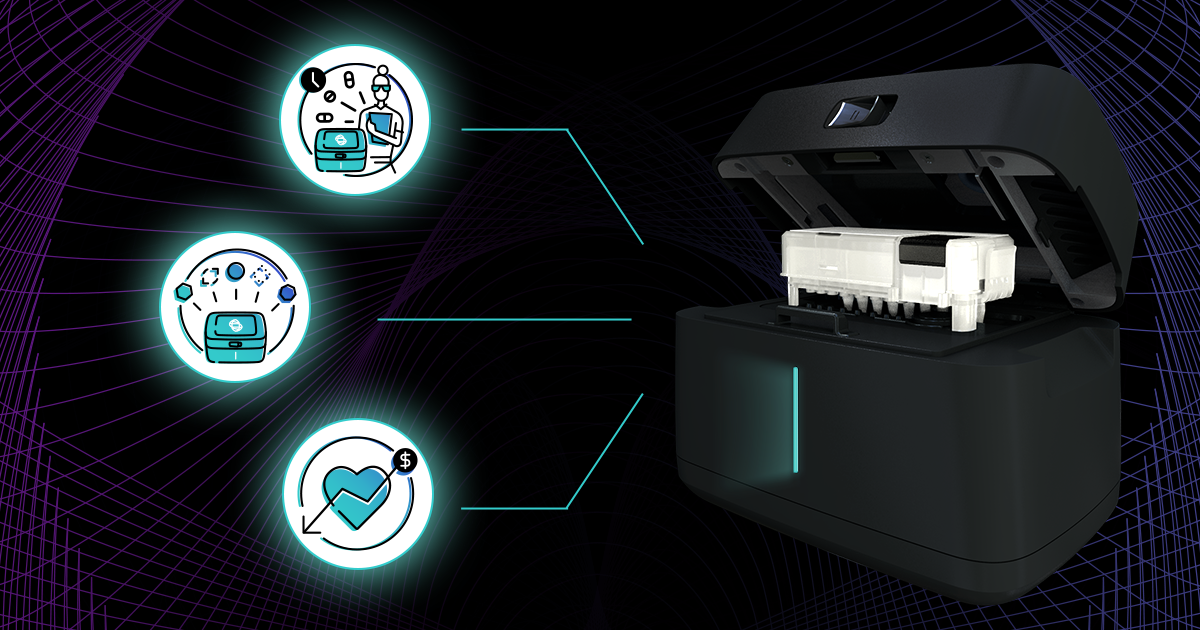
Host response testing allows physicians to quickly rule out entire categories of potential infection to narrow their focus to the likely culprits for an illness. This can enable physicians to make...
401 North Broad St Suite 222 Philadelphia, PA 19108